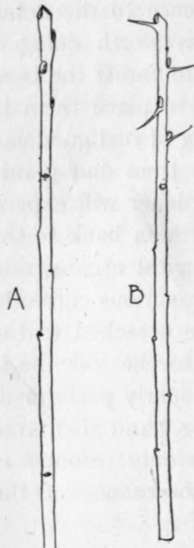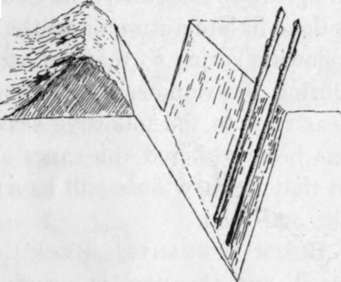Chapter XVI. Small Fruit. Currants, Gooseberries
Description
This section is from the book "School Gardening", by W. Francis Rankine. Also available from Amazon: School Gardening.
Chapter XVI. Small Fruit. Currants, Gooseberries
CURRANTS and Gooseberries are known as " bush " or " small " fruits, and although Raspberries are borne on canes and not on bushes, it is better for the sake of easy classification to extend the term to embrace this latter small fruit.
Soil
In the first place it is essential to prepare a deeply cultivated and thoroughly drained site. This advice in reference to preparation of the fruit plot applies also to Apples, Pears, and Plums. The roots can only develop properly in a friable soil, and therefore the fruit grower must ensure this condition of growth by careful cultivation.
Propagation
Currants and Gooseberries are propagated by cuttings, and Raspberries by suckers or division. Firm shoots of the first and second named must be selected in October or November. Make a clean horizontal cut across the base of the cutting just below a bud; cut away the top of the shoot and remove all the buds except three or four at the top ; the cuttings should be from a foot to fifteen inches long when ready for insertion. If many cuttings are made, open a trench with a spade and insert them six inches asunder so that from one-half to three-quarters of the length of each cutting is in the ground; press the soil firmly up. Red and White Currants and Gooseberries are treated in this way. Black Currants are propagated by cuttings of one year old wood with a heel attached, and this is planted in the manner recommended above ; they should be about six inches long, and no buds must be removed. After the cuttings have made a year's growth, the growths should be cut back to two or three buds. They should then be lifted and replanted about two feet apart. Another season's growth is allowed, and the buds will have grown into branches, and the bush has commenced to assert its form. These branches, or shoots, are pruned to about one-third of their length, and the cut should be made just above a bud that will lead the growth away from the centre of the plant. The cut should make an angle of about forty-five degrees with the direction of growth. Propagation by cuttings should certainly be incorporated in the scheme of work carried out in the fruit plot.

Fig. 56. cuttings.
A.-Currant cutting. B.-Gooseberry cutting.
Raspberries are propagated from young canes divided from established stools, and only well-rooted ones should be selected, or by rooted suckers. The Raspberry root system is characteristic, and is composed of a mat of very fine fibres. In planting, these must be arranged with the greatest care, and firmly covered with soil. Planting is done in late autumn and the canes are cut down in the following spring so that only five to eight inches remain. During the summer young canes are formed, and these bear fruit in the following season. As soon as the fruit has been gathered the canes are cut out from the base so that the new ones will have the benefit of more light, air, and food.

Fig. 57. A Trench For Cuttings.
Black Currants
Black Currants bear fruit on new wood, and therefore in pruning, the old wood must be removed. The young shoots must be encouraged, and in this matter the culture of Black Currants differs materially from that of the Red and White varieties. New growth is required, and hence the surrounding soil must be kept well supplied with half-rotted manure, and in pruning, old branches should be removed.
In recent years the Black Currant Mite has caused wholesale destruction among the plants. It is generally known as " big bud," and the appearance of abnormally enlarged buds indicates that the mite is present. Badly infested trees must be destroyed, and whenever the abnormal buds are noticed they must be removed and burnt-do not throw them on the soil.
Red And White Currants
On these, fruit is borne on the old wood, and consequently the new shoots must be cut into spurs when the pruning-knife is used. Some extension of the main branches should be encouraged each season until the whole of the available space is occupied.
Continue to:
